Harley-Davidson, 1903
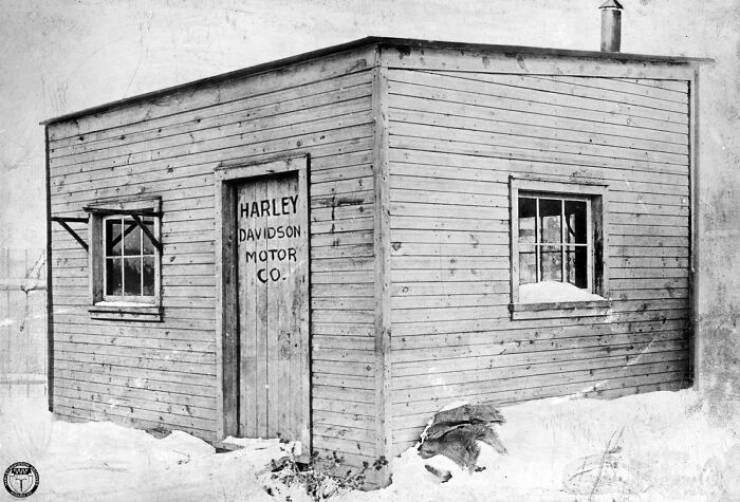
The Harley-Davidson company was founded in 1903 in Milwaukee, Wisconsin. It was one of only two American motorcycle manufacturing companies to survive the Great Depression, the other being Indian.
The roots of the company go back to 1901 when William S. Harley drew up plans for a small engine that could be used in a regular pedal-bicycle frame. Together with his childhood friend Arthur Davidson, they spent the next 2 years working on their motor-bicycle. Arthur’s brother, Walter, later joined the team.
The very first Harley-Davidson motorbike was built in a 10 by 15-foot shed (pictured) in the Davidson family backyard. By 1904, their racer prototype was functional and competed in a Milwaukee motorcycle race where driver Edward Hildebrand rode it to fourth place.
Harley and the Davidson brothers built their first factory in 1906. It was 40 by 60 feet big and made of wood. The company made around 50 motorcycles that year.
When the US entered World War One in 1917, Harley-Davidson motorbikes were adopted for military use. The US military bought more than 20k Harleys during this time.
Coca-Cola, 1886
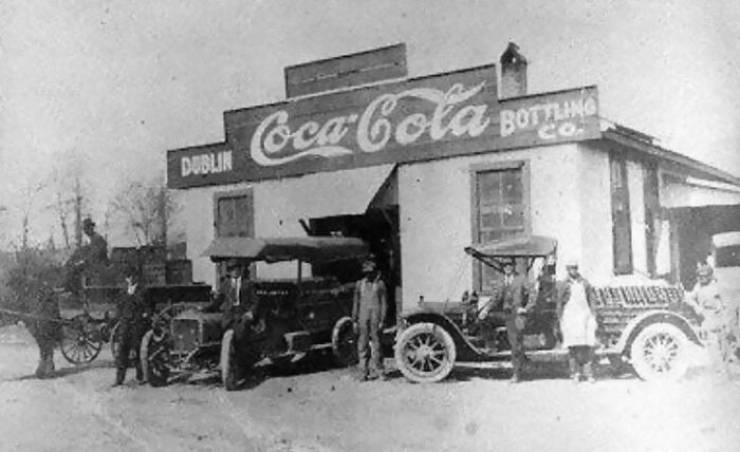
The company produces Coca-Cola, invented in 1886 by pharmacist John Stith Pemberton. In 1889, the formula and brand were sold for $2,300 to Asa Griggs Candler, who incorporated The Coca-Cola Company in Atlanta in 1892.
At first, Coca-Cola was advertised as a drink that relieves headaches and was at first meant to be on sale in drugstores as a medicinal beverage. It was actually Pemberton’s bookkeeper, Frank M. Robinson, who came up with the name of the drink and created its logo. The name, Coca-Cola, was chosen because of its two main ingredients at the time (coca leaves and kola nuts) and because of the pleasant-sounding alliteration of the words.
It’s very first ad read, “Delicious! Refreshing! Exhilarating! Invigorating!” By 1895, Coca-Cola was so popular, it was being sold in every state in the US. And that’s in large part due to Candler mailing out thousands of coupons for a free glass of Coca-Cola. The marketing stunt worked and Coca-Cola forever cemented itself as a global brand.
Samsung, 1938
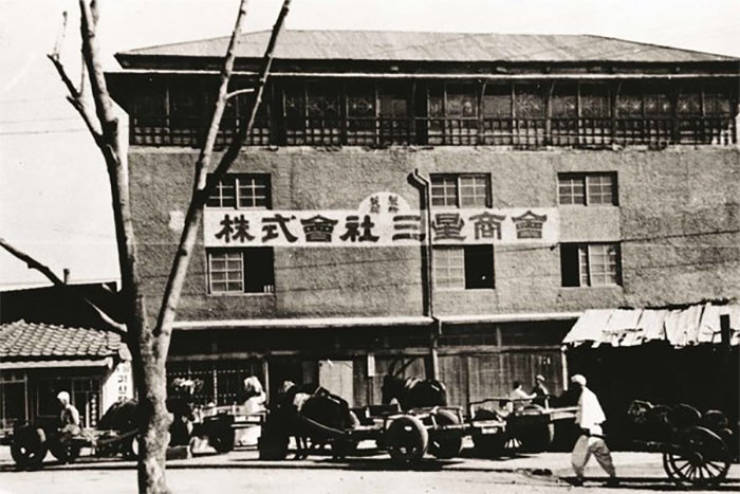
Samsung initially sold noodles and other produce. In 1969 Samsung-Sanyo Electronics, which later becomes Samsung Electronics, was established.
The South Korean company Samsung Sanghoe, was first founded by Lee Byung-chul in 1938 as a trading company. Over the next few decades, the group diversified into lots of different areas, including food processing, textiles, insurance, securities, and retail. By the 1960s, Samsung entered the electronics industry and went into construction and shipbuilding in the 1970s.
Samsung Electronics, one of the group’s most notable industrial affiliates, was the world’s largest information technology company, consumer electronics maker, and chipmaker in 2017.
Samsung’s affiliate companies produce around a fifth of South Korea’s total exports which goes to show the importance the conglomerate has in the country.
Dairy Queen, 1940
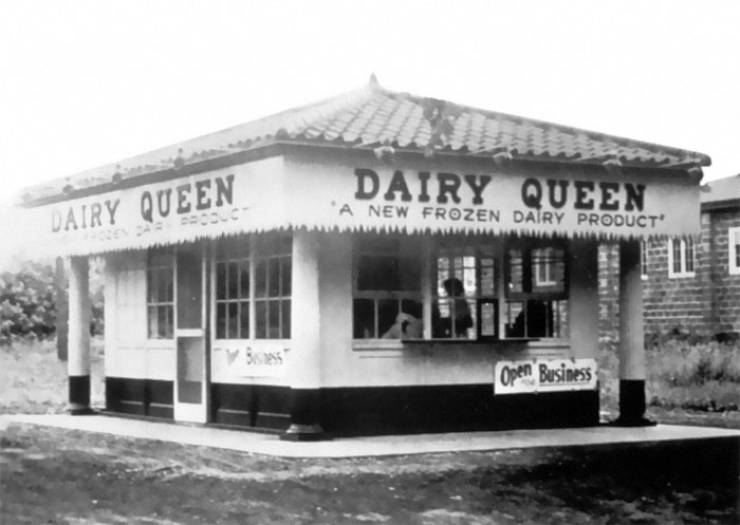
The original formula for Dairy Queen’s soft-serve was developed in 1938. Dairy Queen owns Orange Julius. Dairy Queen itself is owned by Berkshire Hathaway
Burger King, 1953
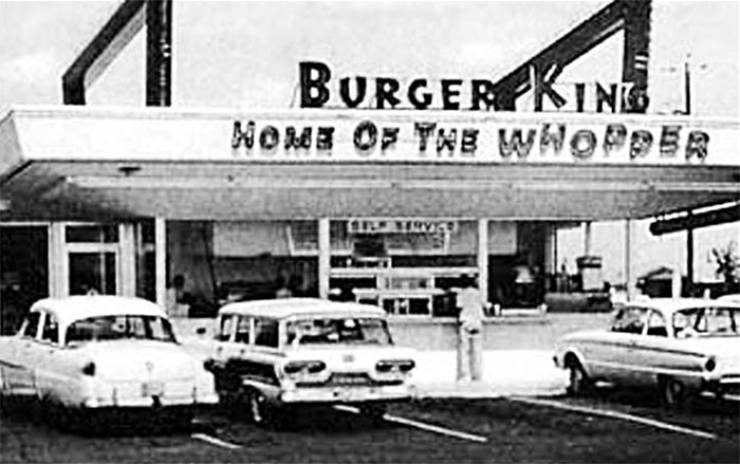
Keith G Cramer, who owned Keith’s Drive-In Restaurant in Daytona Beach, FL, partnered with his father-in-law to start the company. It was originally called Insta-Burger King.
When Insta-Burger King ran into financial difficulties in 1954, its two Miami-based franchisees David Edgerton and James McLamore purchased the company and renamed it Burger King. In the five decades that followed, the company changed hands a whopping four times.
The 1970s were considered to be BK’s ‘golden age.’
Due to copyright laws that protect the Burger King name with another Australian company, BK had to go with Hungry Jack’s in the country. Australia is the only country to have a BK franchise with a different name.
Subway, 1965
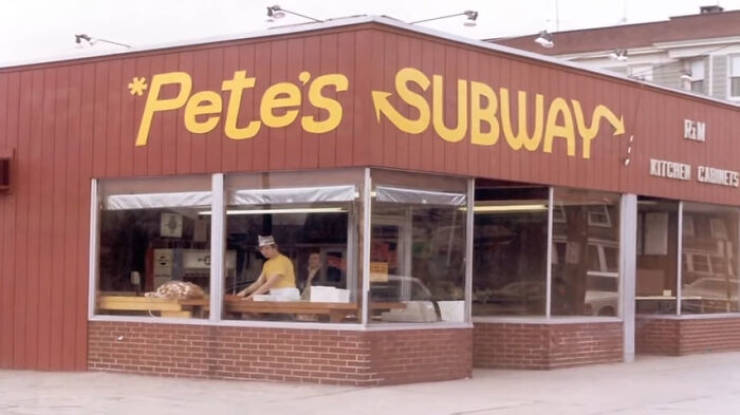
The first store was opened in Bridgeport, Connecticut in August, 1965 by Fred DeLuca and Peter Buck. Then, they set a goal of having 32 stores opened in 10 years. By 1974, the duo owned and operated 16 submarine sandwich shops throughout Connecticut. Realizing they would not reach their 32 store goal in time, they began franchising, launching the Subway brand into a period of remarkable growth which continues to this day.
Subway is one of the fastest-growing franchises in the world and boasts a whopping 41,512 locations around the world as of October 2019. The restaurant has stores in over a hundred countries, however, over half of its restaurants are in the United States. Subway is both the largest single-brand restaurant chain and the largest restaurant operator on Planet Earth.
And it all started with DeLuca borrowing 1k dollars from Buck to start ‘Pete’s Super Submarines’ back in 55 years ago. Just a year after opening their first restaurant, they formed Doctor’s Associates Inc. because it was DeLuca’s goal to earn enough money to pay for his tuition for medical school and because Buck had a doctorate in physics. It was in 1968 that the restaurant was officially renamed Subway.
Nintendo, 1889
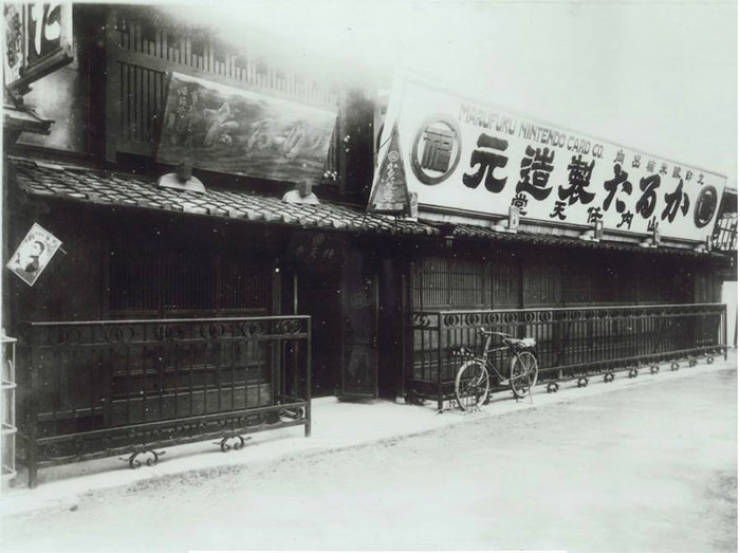
Nintendo was founded in 1889 by craftsman Fusajiro Yamauchi. Originally, the company produced handmade hanafuda playing cards. After venturing into various lines of business in the 1960s, it distributed its first video game console, the Color TV-Game, in 1977. Nintendo gained renown all over the globe for its Nintendo Entertainment System that it released in 1985.
The rest, as they say, is history. Nintendo focused on producing consoles like the Game Boy, the Super Nintendo Entertainment System, the Nintendo DS, the Wii, and the Switch, as well as releasing internationally-recognized video games. Among the video game franchises are characters we know and love, like Donkey Kong and Mario.
Amazon, 1999
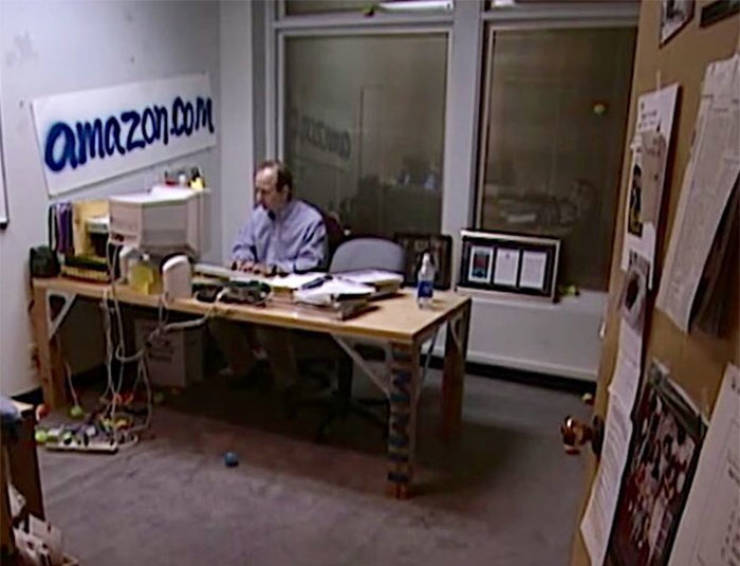
Amazon founder, Jeff Bezos, left his job as vice-president of D. E. Shaw & Co., a Wall Street firm to try and make a mark for himself in the Internet business boom. Bezos went on to start a company in his home garage that he called “Cadaver”. But a few months later when he heard a lawyer mispronounce the name, he decided to change it. The new name was Amazon, which he chose because it was a place that was “exotic and different”
Starbucks, 1971
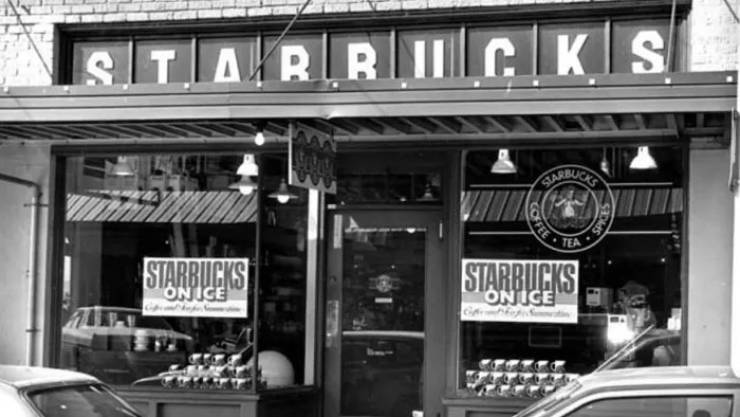
The first Starbucks was opened by University of San Francisco grads Jerry Baldwin, Gordon Bowker and Zev Siegl in 1971 in Seattle, and just sold coffee beans. This all changed when Howard Schultz came on board who, inspired by Italian coffee culture, turned Starbucks’ coffee shops into the social meeting places we know today when he bought the chain in 1987
Whole Foods (Safer-Way), 1980
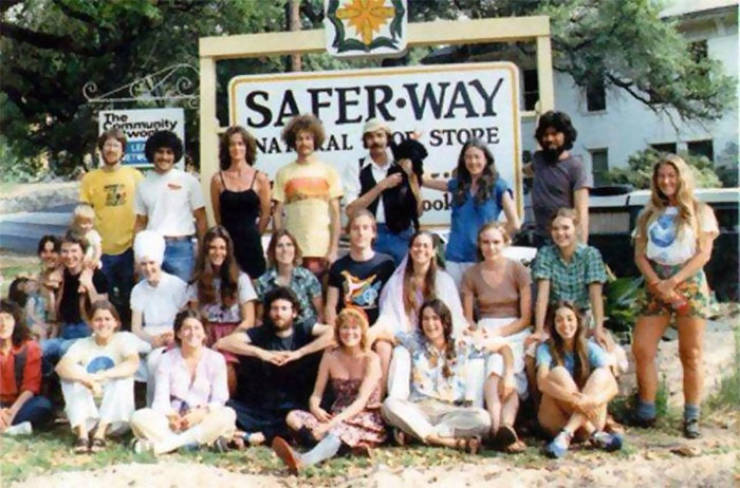
The first-ever Whole Foods opened up in 1980 in Austin, Texas with 19 employees. An old joke about Whole Foods’ first store was that it could be confused for a Volkswagen car dealership because of the abundance of VW Beetles in the parking lot.
Zara, 1975
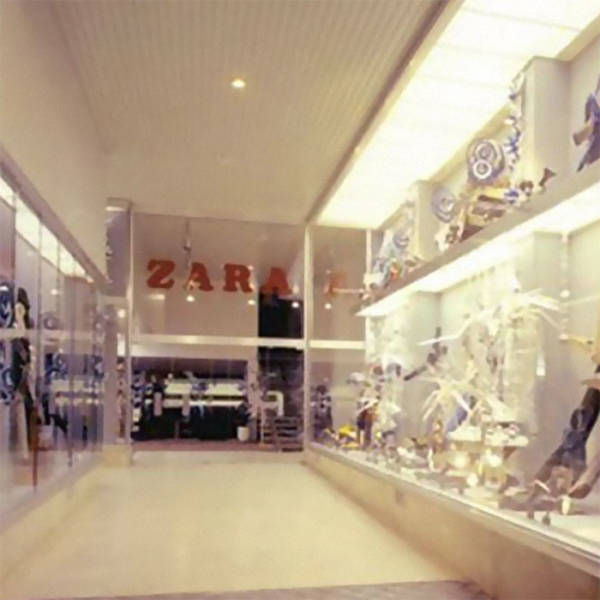
After 12 years of making textiles, Amancio Ortega, founder of Inditex, opens the business’ first store in A Coruña, in Spain, in 1975.
Initially, Ortega wanted to name the store Zorba. But when he found out there was a bar by that name just two blocks away, he rearranged all the letters (plus a few extras) he had received for the sign of his store to make Zara.
The very first Zara store had low-priced lookalike products of much more popular, higher-end, and fashionable clothes.
Zara started its world conquest in 1988 by going international. It’s first leap abroad was to Porto in Portugal. Just a year later, it already entered the United States’ market, then France in 1990. Since then, it expanded internationally with each passing year.
Taco Bell, 1962
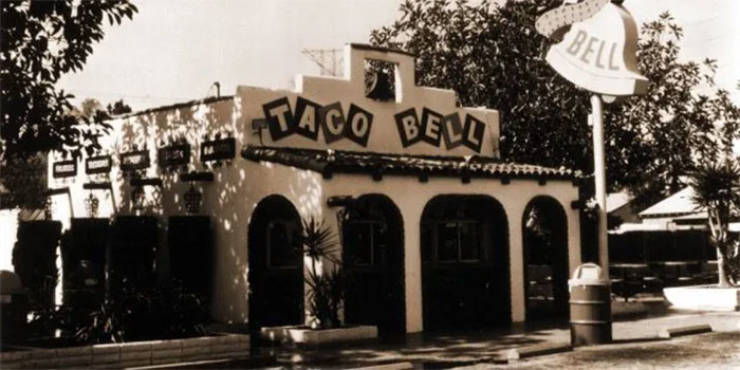
It’s named after the founder Glen Bell. The tacos were originally 19 cents
Tiffany & Company, 1837
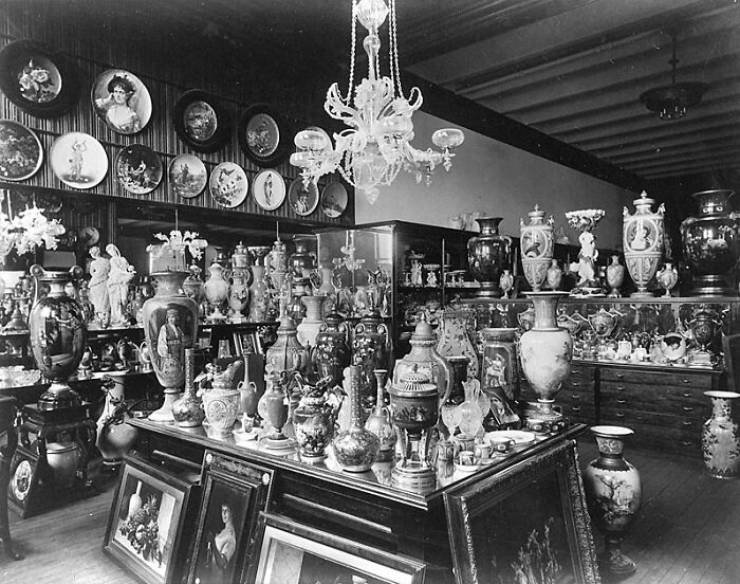
Founded in 1837 by Charles Lewis Tiffany and John B. Young in Brooklyn, Connecticut, as a “stationery and fancy goods emporium”, with the help of Charles Tiffany’s father who financed the store for only $1,000 with profits from a cotton mill. The store initially sold a wide variety of stationery items, and operated as “Tiffany, Young and Ellis” as of 1838 at 259 Broadway in Lower Manhattan.bThe name was shortened to Tiffany & Company in 1853, when Charles Tiffany took control and established the firm’s emphasis on jewelry.
Wendy’s, 1969
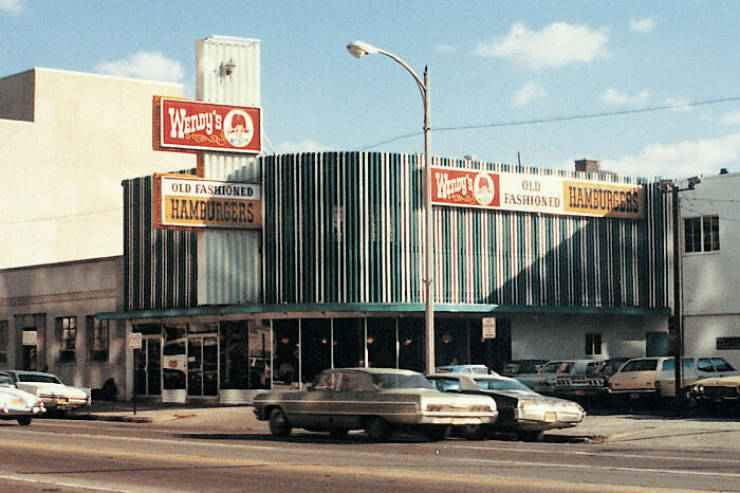
Wendy’s is named after Dave Thomas’ daughter, Melinda. As a child, she had the same issue pronouncing Rs and Ls that many kids do, and she referred to herself as “Wendy” or “Wenda.” Her likeness was also used for the famous pigtailed logo
Nokia, 1865
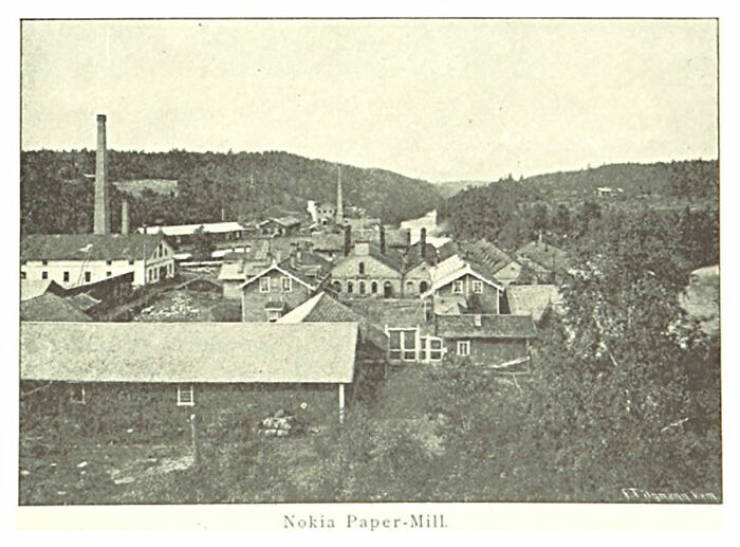
Nokia traces its history to 1865, when engineer Fredrik Idestam opened a paper mill in Tammerkoski Rapids, Finland. Six years later, Idestam opened another paper mill on the banks of Finland’s Nokianvirta river, which inspired him to name his company Nokia Ab
H&m, 1947
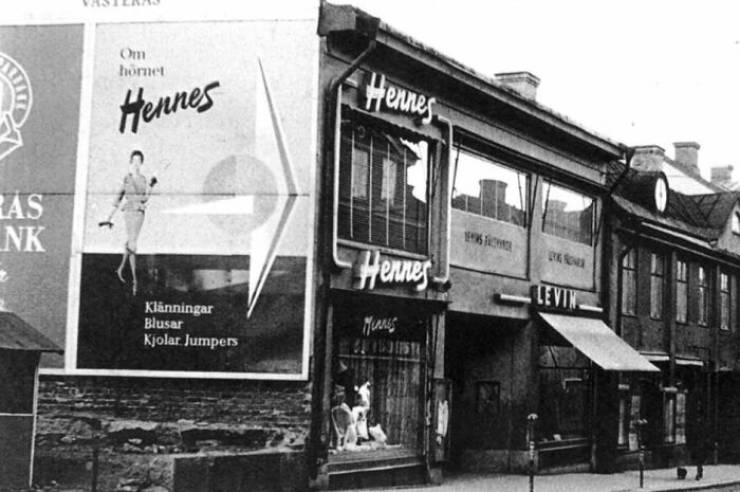
In 1946, Erling Persson opens a women’s clothing store in Sweden called Hennes, which is Swedish for “hers.” About two years later, Persson bought a hunting apparel and fishing store, called Mauritz Widforss. When he combined that brand with Hennes, the store began to sell women’s and men’s clothing. That new store was called Hennes and Mauritz—more commonly known as H&M
The multinational clothing-retail company operated in 74 countries where it had over 5k stores as of November 2019. It had also employed 126k people in full-time positions at that time. H&M is the second-largest global retailer, just behind Inditex which is the parent company of Zara.
Mcdonald’s, 1940
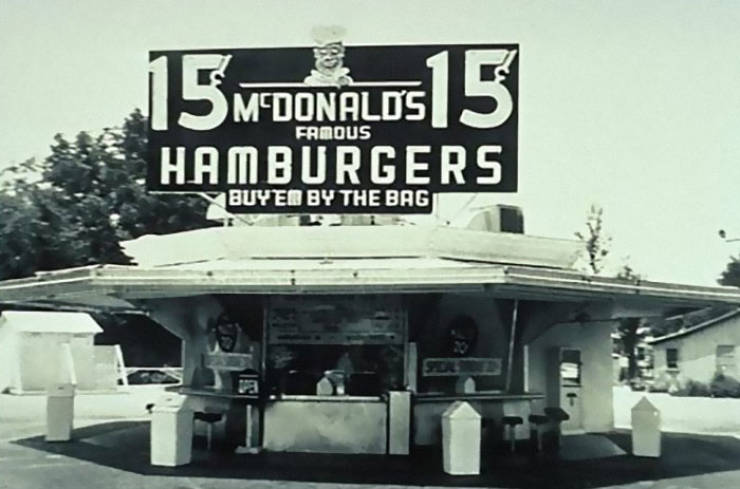
The first McDonald’s restaurant opens in 1940 Siblings Richard and Maurice McDonald opened the first McDonald’s at 1398 North E Street at West 14th Street in San Bernardino, California, USA on 15 May, 1940
Arby’s, 1964
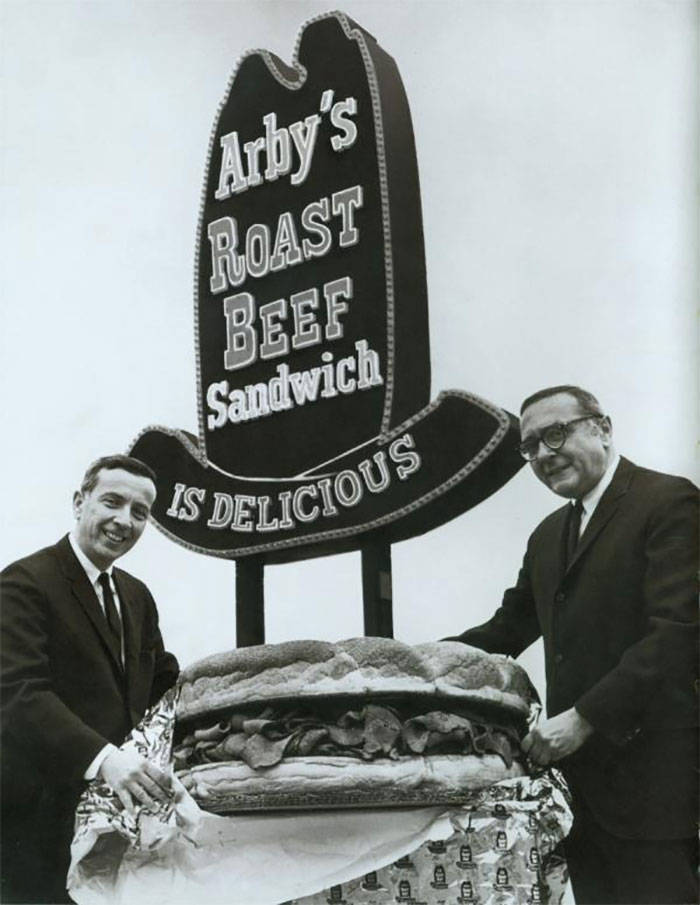
The name is a play on the letters ‘R’ and ‘B.’ And despite some claims that it’s an ode to their classic sandwich, it doesn’t stand for “roast beef.” Rather, RB stands for Raffel Brothers, a nod to founders Leroy and Forrest Raffel, who opened the first Arby’s in Boardman, Ohio, on July 23, 1964. Arby’s was the first fast-food chain to ban smoking in all its restaurants.
Disneyland, 1955
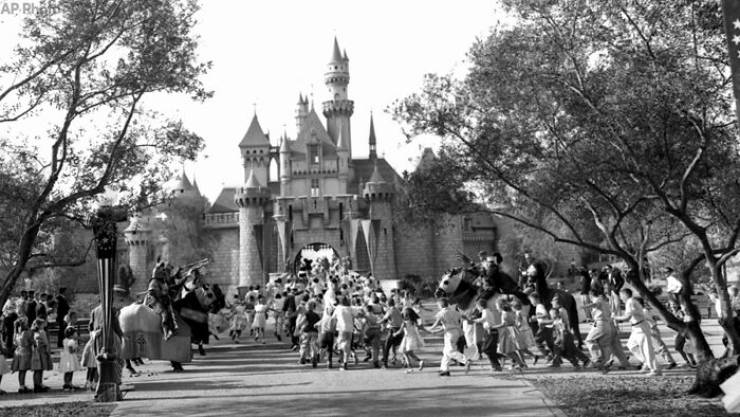
Disneyland originally opened in Anaheim, California on Sunday, July 17th, 1955 with a total of 18 attractions. The park now has 51 attractions.
When the park opened, admission was just $1. It’s now $99. Over 84 million Mickey Mouse ears have been sold since Disneyland opened, making the ears the most popular Disneyland souvenir of all time.
As of December 2018, Disneyland had the largest cumulative attendance than any other theme park in the world. It has had more than 726 million visits since opening its doors.
In 2018 alone, the park had around 18.6 million visits (it was in second place for the most visited theme park that year, just behind Magic Kingdom, also owned by Walt Disney).
Dunkin’ Donuts, 1948
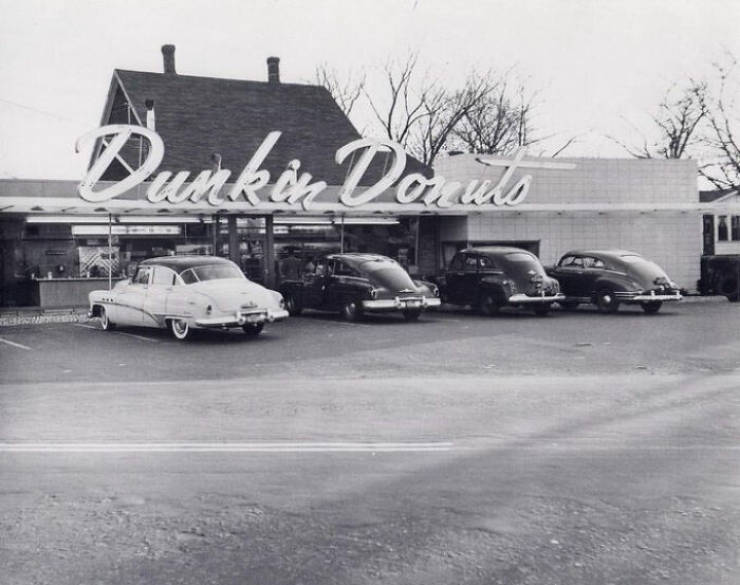
The first Dunkin’ Donuts opened in 1948 in Quincy, MA and on Tuesday, January 16th, we’re opening our store of the future concept right down the street!
Microsoft, 1975
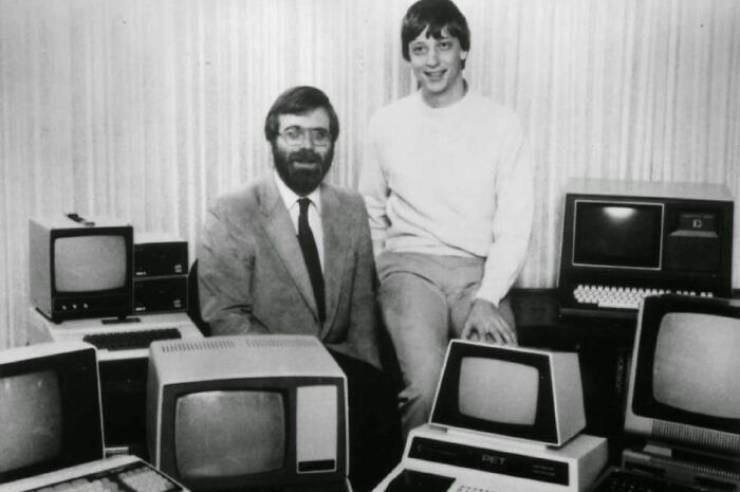
In an Albuquerque garage, in 1975, friends Bill Gates and Paul Allen started Microsoft—originally named Micro-Soft, for microprocessors and software—to develop software for the Altair 8800, an early personal computer.
Microsoft dominated the personal computer operating system market with MS-DOS in the 1980s, followed by the success of Microsoft Windows. After the company’s 1986 initial public offering (aka IPO) and the rise in tis share price, around 12k millionaires and 3 billionaires were created among Microsoft employees.
Steve Ballmer replaced Gates as CEO of the company in 2000. Satya Nadella took over in 2014 who continues to rule the tech empire to this very day.
Among the well-known acquisitions that Microsoft has made are Skype (bought for 8.5 billion dollars in 2011) and LinkedIn (bought for 26.2 billion dollars in 2016).
Suzuki, 1909
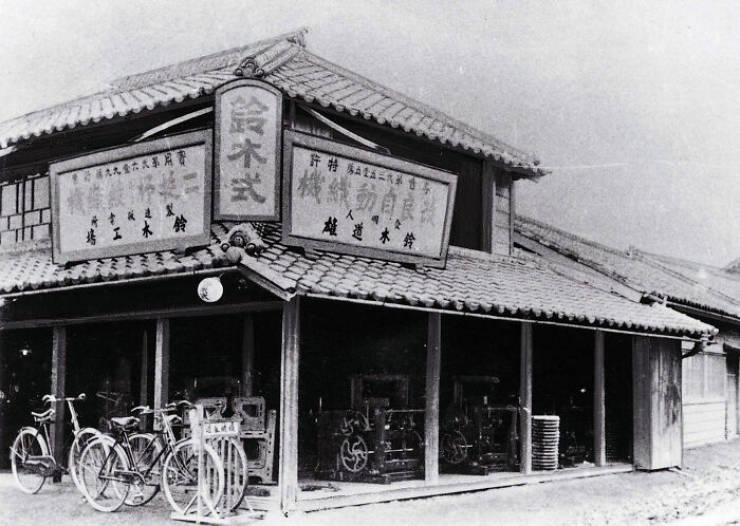
Suzuki was started by Michio Suzuki in 1909. Like Toyota, it focused on making weaving machines and was called Suzuki Loom Works. It was renamed Suzuki Loom Manufacturing Company in 1920, which, due to the success of its weaving machines, started the side gig of making automobiles.
J.c. Penney, 1902
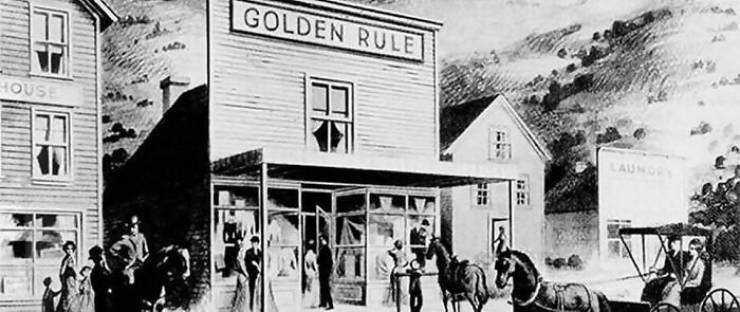
The store was originally named “The Golden Rule.” Today, JCPenney says the original name set the standard for which the company has operated on for more than a century, treating others the way it, too, would like to be treated. The name JCPenney was incorporated in 1913.
Ford Assembly Line, 1913
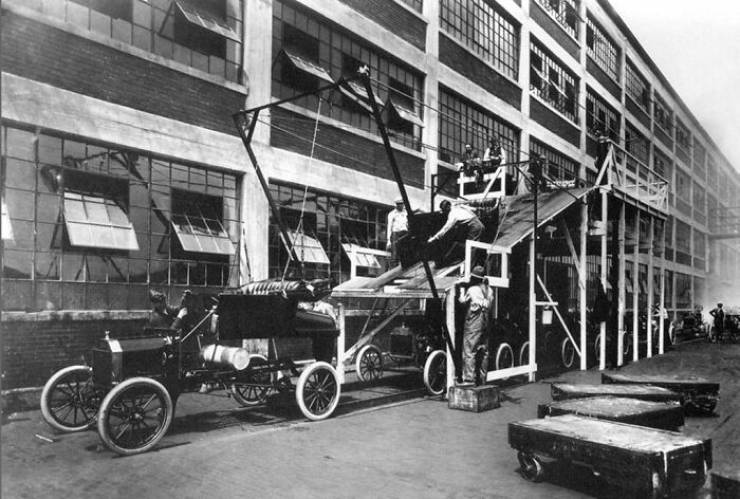
The very first Ford sold was to Dr. Pfennig in 1903, for a grand total of $850. The “Model A” had a 2-cylinder engine, and could reach a max speed of 30 mph. In 1914 Ford offered its employees double the current market average, creating Henry Ford’s “$5-a-day.” The new salary, accompanied by a shorter working day and company profit sharing, minimized employee turnover, and was significant in growing the middle class and fair wages movement. Henry Ford was quoted saying he wanted to help his workers to a “life” not just a “living.”
Levi Strauss & Co., 1880
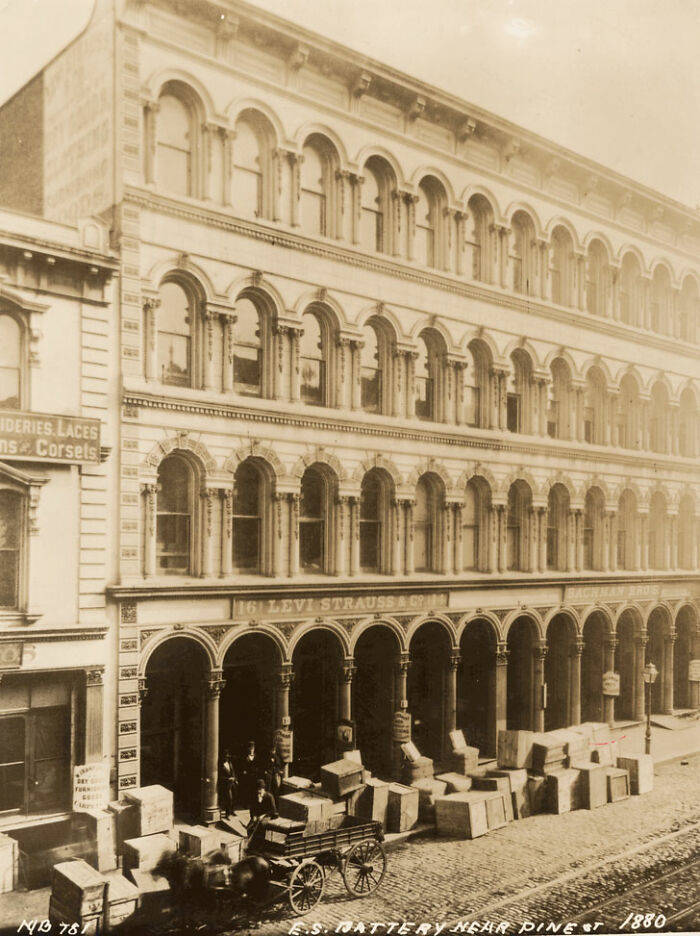
After working with his brothers in their dry goods wholesale business in New York City, Levi emigrates to Gold Rush San Francisco. He opens his own dry goods business to serve the small general stores of the American West
Adidas, 1949
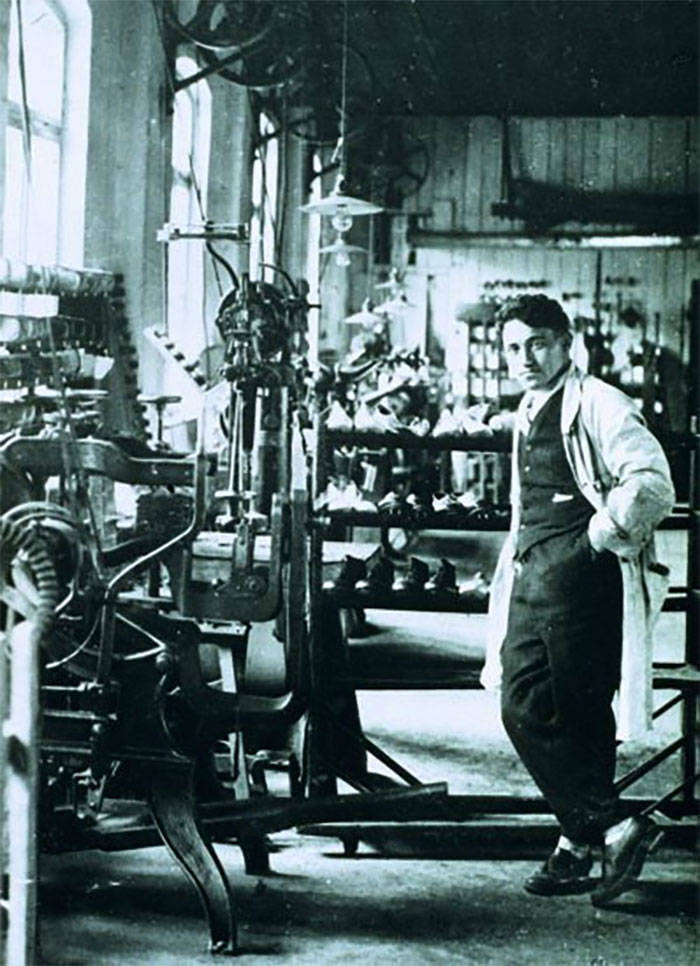
On August 18, 1949, Adi Dassler started over again at the age of 49, registered the “Adi Dassler adidas Sportschuhfabrik” and set to work with 47 employees in the small town of Herzogenaurach. In the same year, he registered a shoe that included the registration of the soon-to-become-famous adidas 3-Stripes. From humble beginnings to a global success story – which was accelerated by a miracle …
Wal-Mart (Walton’s), 1962
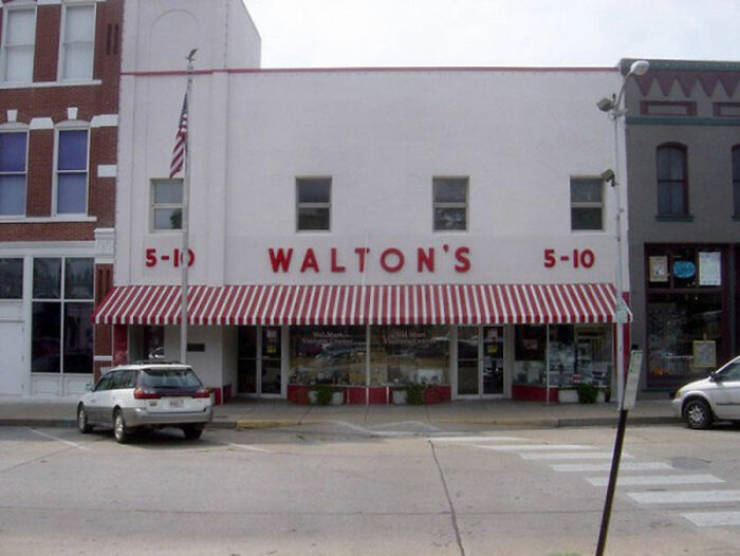
The Walmart Museum is currently located in Bentonville, Arizona, and has a variety of exhibits on display about the history of the firm. One thing that visitors see is that the museum is in the same location as the Walton 5 & 10 – another Ben Franklin franchise opened up by Sam Walton in 1950. This was also the first business that ever held the Walton name
Pepsi, 1915
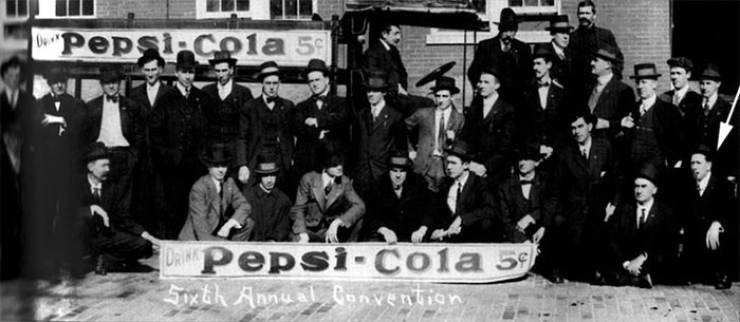
In 1893, American pharmacist, Caleb Bradham developed a drink at his drugstore that would aid in digestion. He named it “Brad’s Drink”. 5 years later, however, he changed the name to Pepsi-Cola after the Greek word for digestion that sounded like “Pepsi” and “cola” after the kola nut. By 1904, the sales of the drink had increased to 19,848 gallons a year.
Xerox, 1906
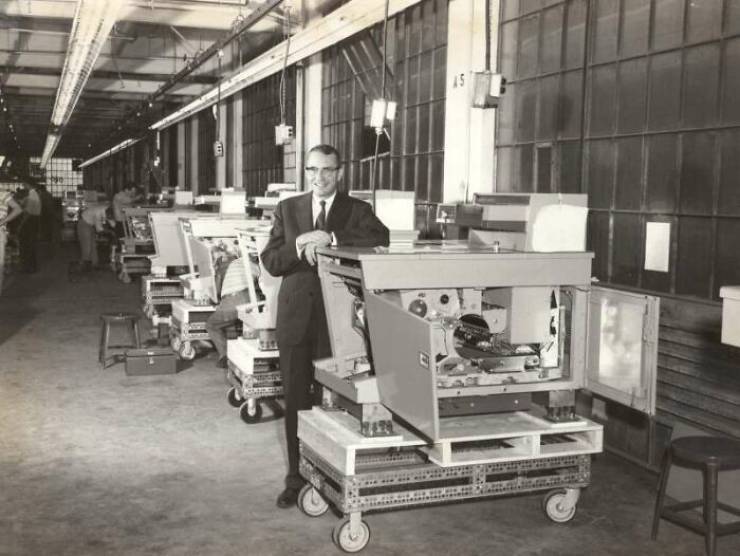
When Xerox got off the ground in 1906, it was as a maker of photographic paper and photography equipment called the Haloid Company. The company didn’t introduce what we would think of as a copier until the Xerox 914 made its debut in 1959.
Metro-Goldwyn-Mayer Studios, 1905
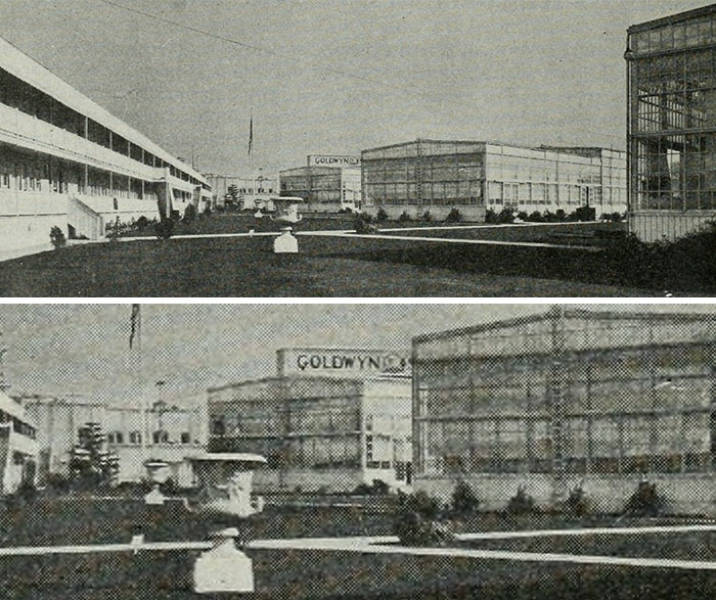
The studio was founded by Marcus Loew. MGM’s famous “Leo the Lion” logo was a carryout from the Goldwyn Pictures part of the business
 Barnorama All Fun In The Barn
Barnorama All Fun In The Barn